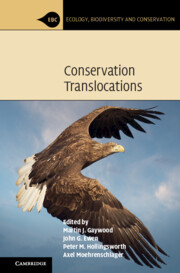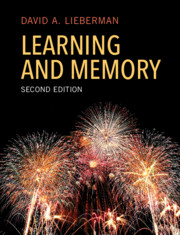Refine search
Actions for selected content:
42 results
Gaming’s hidden gamble: are we betting more than we realise?
-
- Journal:
- Irish Journal of Psychological Medicine , First View
- Published online by Cambridge University Press:
- 27 October 2025, pp. 1-3
-
- Article
-
- You have access
- HTML
- Export citation
Interacting urns on directed networks with node-dependent sampling and reinforcement
- Part of
-
- Journal:
- Journal of Applied Probability / Volume 62 / Issue 3 / September 2025
- Published online by Cambridge University Press:
- 03 February 2025, pp. 972-996
- Print publication:
- September 2025
-
- Article
-
- You have access
- Open access
- HTML
- Export citation
6 - Newspapers, Voting and Agenda-Setting
-
- Book:
- Real News about the News
- Published online:
- 09 February 2024
- Print publication:
- 01 February 2024, pp 97-122
-
- Chapter
- Export citation
8 - Prussia’s Debasement during the Seven Years War: the Role of the Bank
-
- Book:
- How a Ledger Became a Central Bank
- Published online:
- 16 November 2023
- Print publication:
- 30 November 2023, pp 205-242
-
- Chapter
- Export citation
Operant animal welfare: productive approaches and persistent difficulties
-
- Journal:
- Animal Welfare / Volume 17 / Issue 2 / May 2008
- Published online by Cambridge University Press:
- 11 January 2023, pp. 139-148
-
- Article
- Export citation
The use of blended positive and negative reinforcement in shaping the halt response of horses (Equus caballus)
-
- Journal:
- Animal Welfare / Volume 16 / Issue 4 / November 2007
- Published online by Cambridge University Press:
- 11 January 2023, pp. 481-488
-
- Article
- Export citation
1 - Moving Species: Reintroductions and Other Conservation Translocations
- from Part I - Conservation Translocations: Getting Started
-
-
- Book:
- Conservation Translocations
- Published online:
- 07 December 2022
- Print publication:
- 22 December 2022, pp 3-42
-
- Chapter
-
- You have access
- Export citation
14 - Reintroduction of the Endemic Plant Manglietiastrum sinicum (Magnoliaceae) to Yunnan Province, China
- from Part IV - Case Studies
-
-
- Book:
- Conservation Translocations
- Published online:
- 07 December 2022
- Print publication:
- 22 December 2022, pp 415-421
-
- Chapter
- Export citation
2 - Conservation Translocations: Planning and the Initial Appraisal
- from Part I - Conservation Translocations: Getting Started
-
-
- Book:
- Conservation Translocations
- Published online:
- 07 December 2022
- Print publication:
- 22 December 2022, pp 43-74
-
- Chapter
- Export citation
20 - The Role of Community Engagement in Conservation Translocations: The South of Scotland Golden Eagle Project (SSGEP)
- from Part IV - Case Studies
-
-
- Book:
- Conservation Translocations
- Published online:
- 07 December 2022
- Print publication:
- 22 December 2022, pp 456-461
-
- Chapter
- Export citation

Conservation Translocations
-
- Published online:
- 07 December 2022
- Print publication:
- 22 December 2022
Interacting urns on a finite directed graph
- Part of
-
- Journal:
- Journal of Applied Probability / Volume 60 / Issue 1 / March 2023
- Published online by Cambridge University Press:
- 23 September 2022, pp. 166-188
- Print publication:
- March 2023
-
- Article
- Export citation
Chapter 9 - Agitation and Aggression in Prader-Willi Syndrome
-
-
- Book:
- Neuro-behavioral Manifestations of Prader-Willi Syndrome
- Published online:
- 26 May 2022
- Print publication:
- 16 June 2022, pp 77-89
-
- Chapter
- Export citation
5 - Reinforcement
- from Part I - Learning
-
- Book:
- Learning and Memory
- Published online:
- 15 October 2020
- Print publication:
- 05 November 2020, pp 118-157
-
- Chapter
- Export citation

Learning and Memory
-
- Published online:
- 15 October 2020
- Print publication:
- 05 November 2020
-
- Textbook
- Export citation
Synchronization and fluctuation theorems for interacting Friedman urns
- Part of
-
- Journal:
- Journal of Applied Probability / Volume 53 / Issue 4 / December 2016
- Published online by Cambridge University Press:
- 09 December 2016, pp. 1221-1239
- Print publication:
- December 2016
-
- Article
- Export citation
Corticostriatothalamic reward prediction error signals and executive control in late-life depression
-
- Journal:
- Psychological Medicine / Volume 45 / Issue 7 / May 2015
- Published online by Cambridge University Press:
- 16 October 2014, pp. 1413-1424
-
- Article
- Export citation
Acquisition, Learning, or Development of Language? Skinner's “Verbal Behavior” Revisited
-
- Journal:
- The Spanish Journal of Psychology / Volume 7 / Issue 2 / November 2004
- Published online by Cambridge University Press:
- 10 April 2014, pp. 161-170
-
- Article
- Export citation
Amphetamine acts within the lateral hypothalamic area to elicit affectively neutral arousal and reinstate drug-seeking
-
- Journal:
- / Volume 17 / Issue 1 / January 2014
- Published online by Cambridge University Press:
- 29 July 2013, pp. 63-75
- Print publication:
- January 2014
-
- Article
- Export citation
